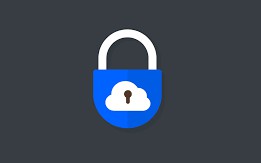Any device that is connected to the internet is vulnerable to data breaches. McAfee estimates that more than 780,000 records are lost to hacking each day.
Data encryption is one of the best available protection against unauthorized access to your files. Data encryption converts plain-text information into an unreadable form, which can only be accessed by a user with the correct decryption key.
However, in a world where cybercrime is on the rise, no security measure is impenetrable. But, by following the best practices, you can mitigate the risk.
Here are the five data encryption practices you must follow to reduce the risk of breaches.
1 — Create a Strategy for Securing Data
Depending on your business size, your security strategy might differ. For example, enterprises with many users should be using cloud servers to store their encrypted data, while small businesses can use their workstations as storage media.
Here are some things to keep in mind when creating a security strategy:
- Understand the rules and regulations: PII (personally identifiable information) needs special encryption to meet US government compliance regulations. Check what other governing policies apply to your business and how they impact your security strategies.
- Encryption tools: Determine which encryption tools are best suited for your business (according to data volume and business needs).
- Encryption algorithm: Check if the technologies or algorithm used by your encryption vendor meets international standards.
- Key management: Decide on ways to generate, store, and replace keys. Also, create strategies to destroy the encryption keys in case of a security breach.
- Auditing data: Determine how you will track irregularities or identify unauthorized access to your encryption keys.
Another thing to check is the speed of the encryption. You would not want to wait for hours to get your data encrypted, especially when you have to send it over the network urgently. Ask your vendor how quickly the tool can encrypt the files without compromising on security.
2 — Protect Data In Transit
Data collection and storage are essential activities for every business. Data stored in your system or dedicated servers is much easier to protect than the files in transit. Since the data is moving back and forth from different locations, it is best to use a VPN to hide your IP address.
Services like Urban VPN protects your online identity with the strongest encryption and DNS/IPv6 data leak protection. Here are some more reasons to use a VPN while transferring data:
- VPNs create an encrypted connection between your device and the internet, hiding all your online activities.
- Has security protocols to safeguard your devices and data against attacks on public Wi-Fi.
- Since it changes your IP address, even the prying eyes won’t be able to see if you have files in transit.
- Secures access from workstations to your storage device (cloud network, servers, etc.).
3 — Determine Which Data to Encrypt
When it comes to determining which data to encrypt, it is essential to consider the worst-case scenarios.
How much loss and damage it would do if a specific set of data is compromised? If your answer is too much, then you should be encrypting those data.
Sensitive information like names, contact details, credit card details, and social security numbers are examples of data that need to be encrypted no matter how robust your security system is.
Tip: Encrypt the files you are transferring over a network or accessing remotely.
#security #cybersecurity #data security #data encryption #data analysisa
